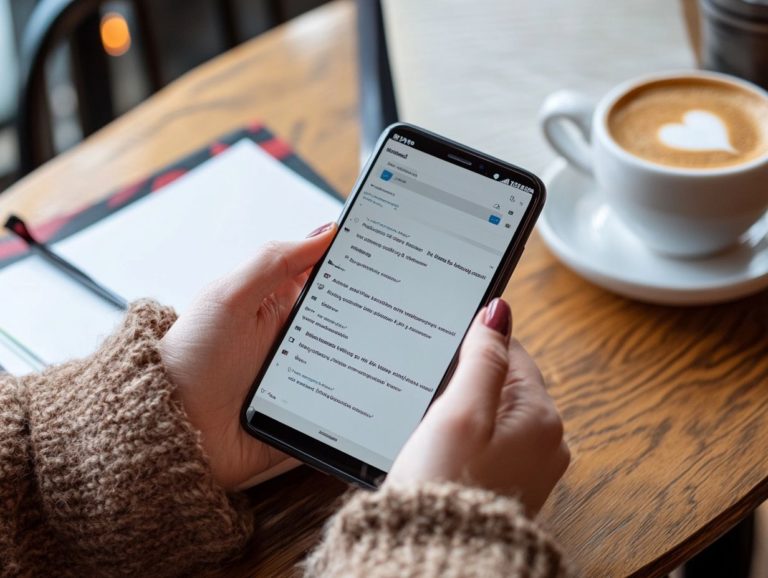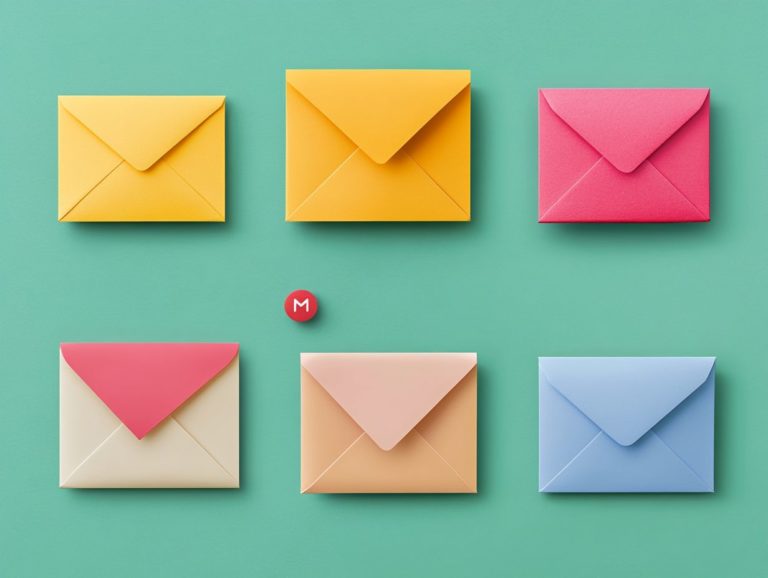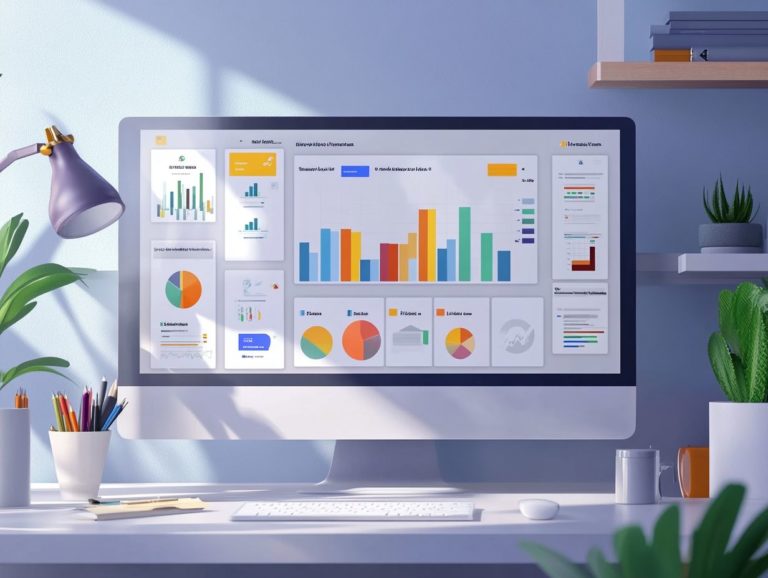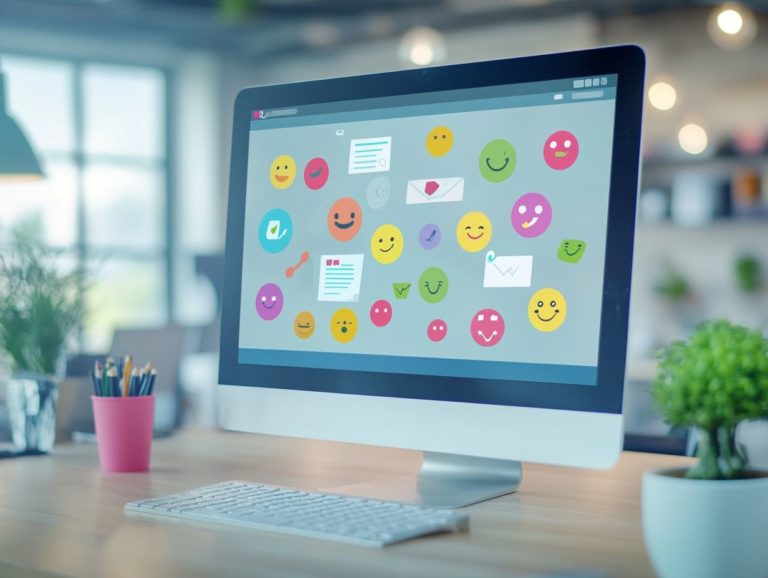Best Times to Send Marketing Emails
Let's Set Up Your Lead Generation Strategy
Fill out the form below, and our team will get in touch with you to create a tailored solution for your business.
Email marketing holds immense potential for businesses. Its success often hinges on a singular, critical factor: timing.
In email marketing, timing can greatly influence open rates and engagement levels. It s essential to explore key factors that help determine the best times to hit “send.”
You will find practical tips to analyze your results effectively and boost audience engagement.
Ready to supercharge your email strategy? Let s delve deeper!
Contents
- Key Takeaways:
- Importance of Timing in Email Marketing
- Let's Set Up Your Lead Generation Strategy
- Factors to Consider When Choosing Email Send Times
- Let's Set Up Your Lead Generation Strategy
- Best Times to Send Marketing Emails
- How to Determine the Best Send Times for Your Audience
- Let's Set Up Your Lead Generation Strategy
- Tips for Maximizing Email Open Rates
- Frequently Asked Questions
- Let's Set Up Your Lead Generation Strategy
- Is there a specific time to avoid sending marketing emails?
- Does the type of email matter when determining the best time to send?
- Can I use my own email analytics to determine the best times to send marketing emails?
- Are there any tools or resources that can help determine the best times to send marketing emails?
Key Takeaways:
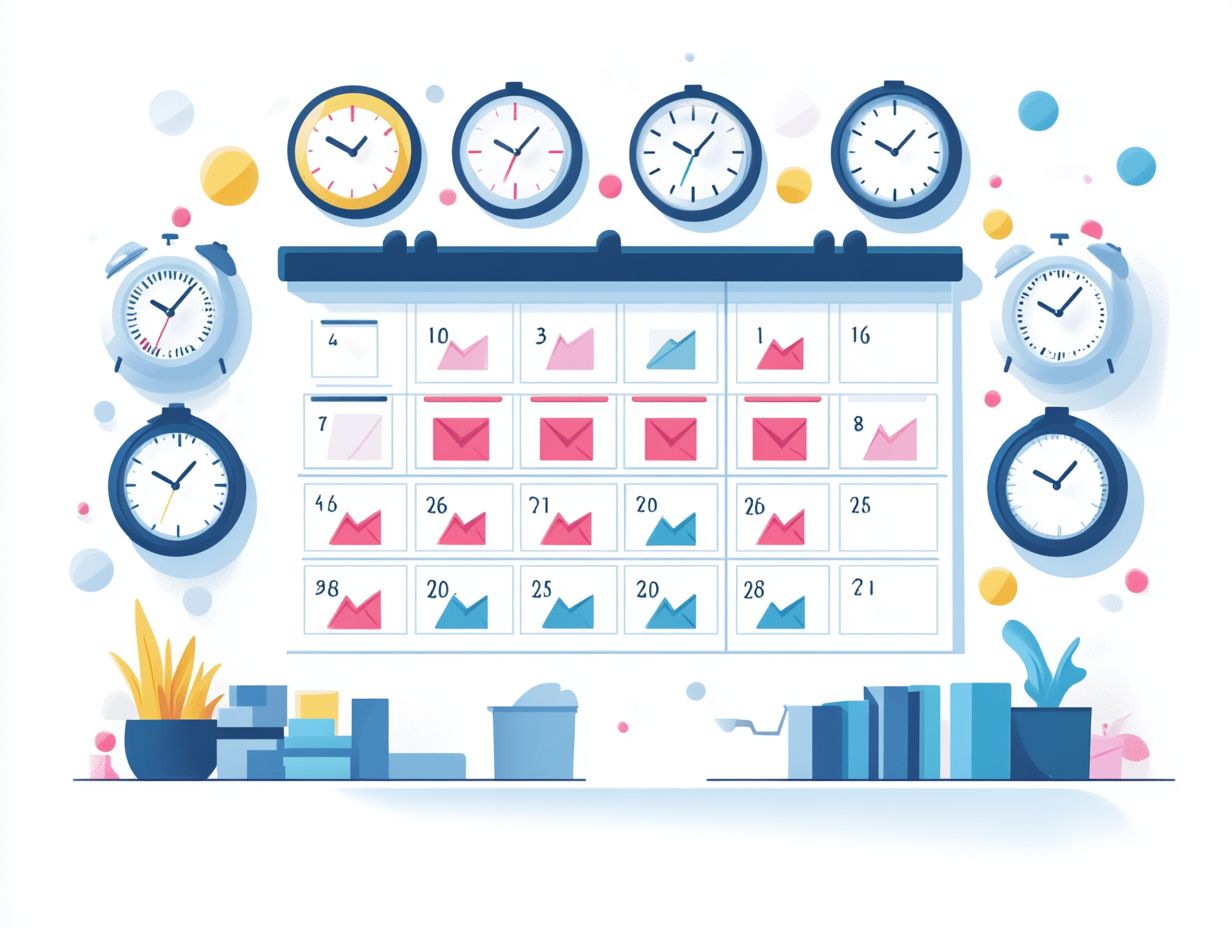
- Timing is crucial in email marketing and impacts your campaign’s success.
- The best times to send emails vary based on your audience, industry, and goals.
- Conduct tests and analyze results to find the optimal send times for your audience.
What is Email Marketing?
Email marketing is an effective digital marketing strategy. It allows you to send targeted emails to a specific audience to promote products, services, or brand awareness.
This includes welcome emails and transactional emails. You can use metrics like open rates and click-through rates to gauge how effective your campaigns are.
Whether you focus on business-to-business (B2B) or business-to-consumer (B2C) audiences, email marketing is essential for nurturing leads. It enhances subscriber engagement and drives conversions through personalized and relevant content.
By segmenting your audience based on interests and behaviors, you can create messages that resonate deeply. This strengthens the likelihood of engagement and builds a meaningful connection with your brand.
Track key metrics, such as performance and engagement data. This allows you to analyze the success of your campaigns and refine your messaging continuously.
Importance of Timing in Email Marketing
Timing is critical for email marketing. The success of your campaigns often depends on when you hit the send button.
Understanding consumer behavior helps you pinpoint the best times to send emails. This can dramatically influence key performance metrics, such as open rates and click-through rates.
By analyzing send schedules, you can enhance subscriber engagement. Ensure your emails land in the inbox during peak moments when your audience is most receptive.
This strategic approach boosts campaign performance and helps you reach your marketing goals through effective email automation.
Why Timing Matters
Knowing your target audience is vital! It can dramatically boost your email campaign s success. The timing of your email outreach plays a pivotal role in shaping consumer behavior, influencing both open rates and click-through rates. Hitting that sweet spot for email send times can mean the difference between an engaged subscriber and an ignored message. This underscores the importance of dividing your email list based on different interests and behaviors.
Let's Set Up Your Lead Generation Strategy
Fill out the form below, and our team will get in touch with you to create a tailored solution for your business.
By analyzing past campaigns, you can uncover patterns in engagement data that guide you in optimizing future send times and enhancing your click-to-open rates. Understanding your audience’s timing preferences gives you a competitive edge in a crowded inbox, helping ensure your email blasts reach them effectively.
Failing to consider optimal timing can lead to missed opportunities and wasted resources. This highlights the importance of careful planning around your email outreach. For instance, reviewing historical open rates can reveal when your audience is most receptive. Insights from A/B testing can pinpoint the best days to send for engagement.
Monitor seasonal trends and events, such as invitation emails and abandoned cart reminders. These are essential for crafting an effective strategy.
By aligning your send times with consumer habits and preferences, you can strengthen your connection with subscribers, leading to significant improvements in long-term loyalty and engagement metrics. This, in turn, drives your performance metrics.
Factors to Consider When Choosing Email Send Times
Selecting the ideal send times for your email outreach involves a thoughtful examination of several key factors that significantly impact its effectiveness. This includes subscriber preferences and industry timing. Considerations such as your target audience’s demographics and the unique preferences of your subscribers are essential for establishing optimal send schedules for various types of emails, including follow-ups and transactional emails.
By leveraging intelligent segmentation strategies, you can tailor your email timing to resonate with the varied preferences and behaviors of different audience segments. This approach not only enhances engagement but also elevates your overall marketing results using effective marketing automation.
Target Audience and Demographics
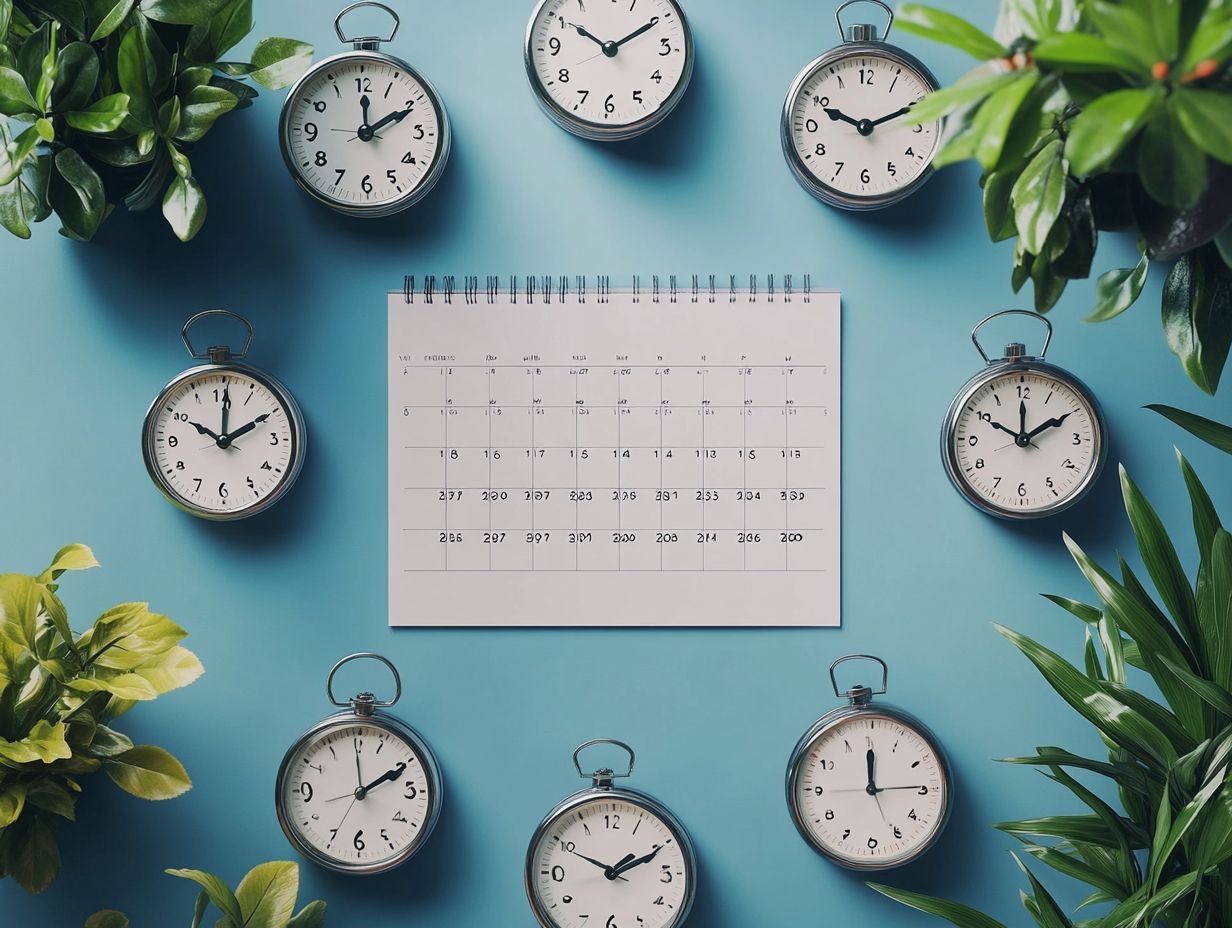
Understanding your target audience and their demographics, especially their online behavior, is essential for optimizing your email campaigns. This knowledge shapes your decisions regarding timing, content, and overall strategy.
For example, younger consumers might appreciate receiving transactional emails in the evening when they re winding down, whereas professionals are more likely to engage during midday breaks. Working parents may have different peak activity times compared to students or retirees, which is why dividing your email list based on different interests and behaviors is crucial in email marketing.
By recognizing these nuances, you can craft email strategies that resonate more effectively with your specific audience segments, ultimately enhancing engagement rates and improving your marketing KPIs.
Adjust how often and how you communicate based on what s common in your industry. This makes it vital to align your content with the recipient’s expectations, email timing, and lifestyle.
Embracing this understanding not only boosts your open rates but also helps cultivate lasting customer relationships through tailored communication strategies.
Industry and Business Goals
Industry timing is crucial when shaping your email marketing strategies. Each sector displays distinct engagement patterns that can be harnessed to maximize the effectiveness of email blasts.
To truly align your email campaigns with your business goals whether boosting sales or enhancing brand awareness you need to grasp the peak engagement periods relevant to your industry.
By harnessing performance measurements and data insights from marketing automation tools like HubSpot or Salesforce, you can pinpoint the optimal send times that resonate with industry trends and your specific objectives. This ensures your campaigns hit the mark.
Let's Set Up Your Lead Generation Strategy
Fill out the form below, and our team will get in touch with you to create a tailored solution for your business.
Take the retail sector, for example. It often utilizes abandoned cart emails to recover lost sales and drive engagement. Retail typically experiences higher engagement during weekends, especially on Friday, and during holiday seasons. These windows are ideal for your promotional campaigns.
On the flip side, B2B companies usually find their sweet spot during weekdays, particularly in the mid-morning hours on Tuesday and Thursday, when potential clients are more likely to engage.
Paying attention to these patterns, including consumer insights from past campaigns, can transform your email strategy into a powerhouse! Being aware of industry-specific events like product launches or conferences can also inform your campaign strategies. This allows for timely invitation emails that maximize engagement.
For instance, tech companies often see a spike in interest around major tech expos. This creates an excellent opportunity for targeted welcome emails and personalized follow-ups. Maximizing your email outreach during these times can yield amazing results right now!
When you align your email strategies with industry timing and organizational goals, you set yourself up for improved open and conversion rates, ultimately leading to better overall marketing outcomes.
Best Times to Send Marketing Emails
Identifying the optimal times to send your marketing emails is essential for boosting engagement and maximizing key performance metrics like open rates and click-through rates. Research shows that specific days of the week, like Monday and Tuesday, and certain times of day can yield significantly better results.
By leveraging marketing automation tools like Brevo or Omnisend, you can strategically plan your send schedules. This ensures your emails land in your audience s inbox at just the right moment.
Research-Backed Optimal Times
Researching the optimal times for sending marketing emails can dramatically elevate your email open rates and click-through rates. This gives you a clear roadmap for effective communication.
By analyzing consumer insights and engagement data, you can uncover patterns that reveal when recipients are most likely to open and respond to your emails. This enhances your overall strategy.
Recent studies show that emails sent mid-week especially on Tuesdays and Thursdays tend to outperform those dispatched on weekends or Mondays. This makes them optimal days for email follow-ups.
This timing aligns perfectly with the natural rhythm of the workweek. Many individuals check their emails more frequently during these days, leading to better overall campaign performance.
Insights suggest that late mornings, around 10 AM to 11 AM, are prime for capturing attention. This timing is ideal for invitation emails, as recipients often check their inboxes shortly after starting their day.
By understanding these behaviors, you can not only boost your open rates but also enhance your click-through rates by delivering targeted content when your audience is most engaged in your email newsletter.
Ultimately, this strategic timing fosters deeper connections with recipients, significantly enhancing the effectiveness of your campaigns and driving overall engagement.
How to Determine the Best Send Times for Your Audience
Determining the optimal send times for your audience requires a step-by-step method that blends testing two different options with thorough analysis to refine your email strategies. You can explore various send times using A/B testing, evaluating engagement metrics across different demographics and segments.
Let's Set Up Your Lead Generation Strategy
Fill out the form below, and our team will get in touch with you to create a tailored solution for your business.
By utilizing email automation tools, you can streamline this process, enabling yourself to make data-driven decisions that enhance the effectiveness of your email campaigns and ensure they resonate with your audience.
Testing and Analyzing Results
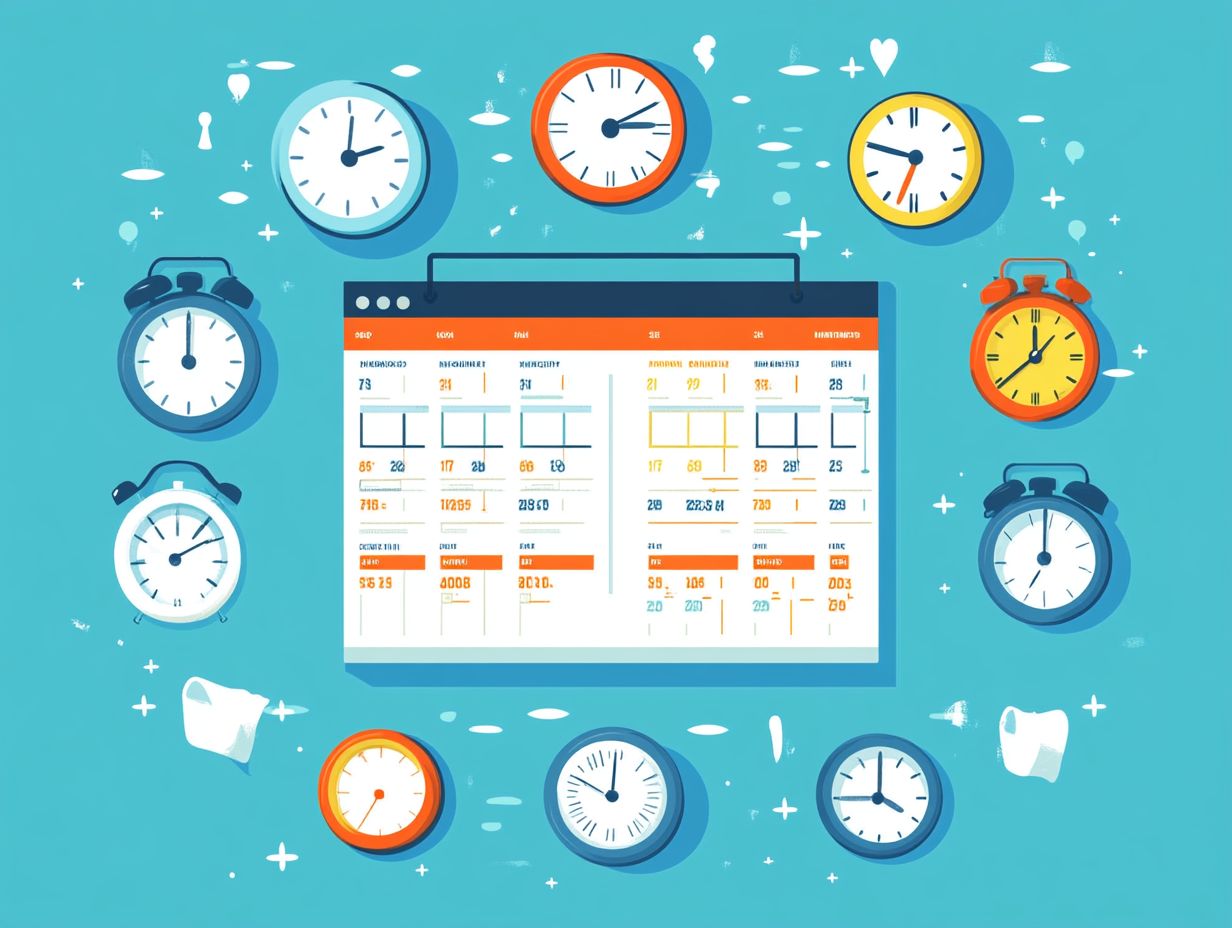
Testing and analyzing your results is crucial for optimizing email campaigns. This process offers valuable insights into the effectiveness of different send times and strategies. By scrutinizing engagement data like click-to-open rates, which is the percentage of people who clicked on your email after opening it and overall campaign performance, you can pinpoint the send times that yield the best outcomes.
This iterative process fosters continuous improvement, ensuring that your future campaigns align strategically with your audience’s preferences and behaviors.
Understanding these metrics is essential because they reveal how well your recipients are engaging with your content. For example, a low click-to-open rate may suggest that while your subject line was catchy, the content itself didn’t quite hit the mark in terms of relevance or appeal.
By diving deep into these analytics, you can refine your messaging, segment your audience more intelligently, and personalize your future emails. Adopting a data-driven approach cultivates deeper connections with your subscribers, enhancing retention and conversion rates.
Regularly refining your strategies based on these insights guarantees that your campaigns remain impactful and resonate with the ever-evolving preferences of your audience. Stay ahead of the game by continuously improving your strategies!
Tips for Maximizing Email Open Rates
To boost your email open rates, try using a mix of techniques like personalized content and captivating subject lines. Take time to understand your subscribers’ preferences and craft messages that truly resonate with them. This approach helps you capture their attention and foster meaningful engagement.
Implementing segmentation strategies enables you to tailor your communication, ensuring that the right content reaches the right audience at just the right moment ultimately enhancing your overall email performance.
Other Strategies for Increasing Engagement
To elevate engagement in your email campaigns, consider a range of strategies beyond just timing. Automated scheduling and transactional emails are powerful tools at your disposal. By exploring subscriber preferences and tailoring your content accordingly, you can significantly boost engagement levels, ensuring that your emails not only land in inboxes but also inspire action. This is especially true when targeting specific days like Saturday and Sunday for certain audiences.
This approach helps you deliver emails on time and ensures your messages connect with your audience. Automated scheduling allows you to send emails at the most opportune moments based on subscriber behavior, enhancing your open rates. Don t overlook transactional emails; they can serve as invaluable touchpoints that foster trust and encourage further interaction, especially in B2B transactions.
Integrating feedback loops into your strategy can guide content refinement, ensuring it remains relevant and aligned with subscriber interests. By continuously optimizing these strategies, you re likely to cultivate lasting relationships and witness an improvement in your overall engagement metrics.
Frequently Asked Questions
When should you send marketing emails for the best results?
The best times to send marketing emails vary depending on your target audience and industry. Generally, mid-week between 10 AM and 2 PM tends to have higher open rates. However, it’s important to test and analyze your specific audience’s behavior to find the optimal time for your emails.
Does the day of the week matter for marketing emails?
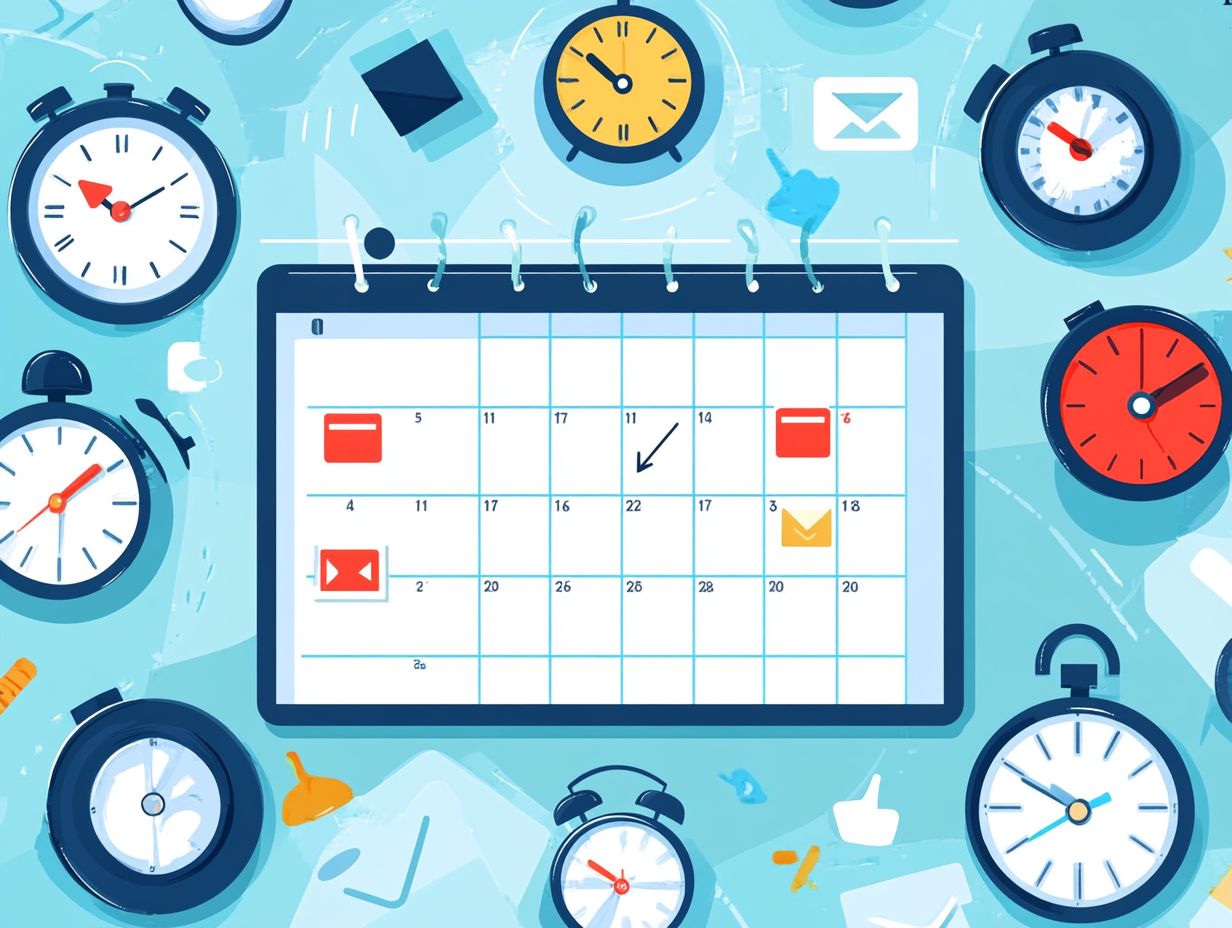
Let's Set Up Your Lead Generation Strategy
Fill out the form below, and our team will get in touch with you to create a tailored solution for your business.
The day of the week affects how well your marketing emails perform. For instance, weekends generally have lower open rates compared to weekdays.
Avoid sending marketing emails on Mondays and Fridays. Many people are busy catching up on work or planning for the weekend during these times.
Is there a specific time to avoid sending marketing emails?
Avoid sending marketing emails early in the morning or late in the evening. During these times, people are either getting ready for work or winding down for the day.
These emails often get buried and may go unnoticed.
Does the type of email matter when determining the best time to send?
Absolutely! The type of email you send can change the game for your timing. Promotional emails may perform better on weekdays during lunch breaks.
Meanwhile, informative or educational emails often do well during evenings or weekends when people have more time to read and engage with the content.
Can I use my own email analytics to determine the best times to send marketing emails?
Yes! Analyzing your email data is essential for finding the best times to send marketing emails. Look at your open rates, which indicate how many people opened your email, and click-through rates, which show how many clicked on links within the email.
Use this data to inform your email scheduling strategy.
Are there any tools or resources that can help determine the best times to send marketing emails?
Yes! There are many email marketing tools and resources that can provide insights and recommendations tailored to your industry and target audience.
Some popular options include Mailchimp, Constant Contact, and HubSpot. Don t wait! Leverage these tools today to boost your email success.

